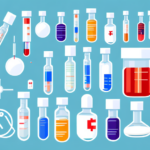Transporting blood samples is a critical component in the diagnosis and treatment of patients, providing vital information about their health. Ensuring the safe and efficient transportation of these samples is essential to maintain their integrity, avoid delays in diagnosis, and uphold the safety of both patients and healthcare personnel. This article explores comprehensive guidelines for blood sample transportation, covering the importance of proper methods, quality assurance measures, compliance with legal and ethical standards, and emerging trends in the field.
The Importance and Risks of Proper Blood Sample Transportation
The Importance of Proper Blood Sample Transportation
Proper blood sample transportation is essential to ensure the accuracy and reliability of laboratory results. Blood samples are sensitive to various factors such as temperature, time, and handling conditions. According to the Centers for Disease Control and Prevention (CDC), improper transportation can lead to sample degradation, resulting in inaccurate diagnoses and ineffective treatments. Maintaining the integrity of blood samples is crucial for timely and correct medical interventions.
Understanding the Risks of Improper Transportation
- Sample Degradation or Hemolysis: Blood samples can degrade or undergo hemolysis if not stored or transported under recommended conditions, leading to unreliable lab results.
- Contamination: Exposure to bacteria or viruses during transport can compromise the validity of the sample and pose health risks to laboratory personnel.
- Loss or Misplacement: Inadequate labeling or tracking can result in lost samples, causing delays in diagnosis and treatment.
- Staff Injuries: Mishandling of blood samples can lead to injuries such as needlestick accidents or exposure to hazardous substances.
Transport Methods for Blood Samples
Choosing the Right Transport Method
The selection of an appropriate transport method depends on factors like the type of blood sample, distance, temperature requirements, and urgency. Common transport methods include:
- Courier Services: Utilizes temperature-controlled vehicles and specialized packaging to transport samples over long distances efficiently.
- Self-Transport: Patients may occasionally need to transport their own samples, especially in remote areas. Proper instructions and materials must be provided to ensure sample integrity.
- On-Site Testing: Some healthcare facilities are equipped with on-site laboratories, enabling immediate testing and eliminating the need for transport.
Future Trends in Transport Methods
Advancements in technology are shaping the future of blood sample transportation. Innovations such as drone-based delivery systems and autonomous vehicles are being explored to enhance speed and reliability, particularly in hard-to-reach areas. Additionally, the integration of the Internet of Things (IoT) allows for real-time monitoring of transport conditions, ensuring samples remain within specified parameters.
Preparation and Handling of Blood Samples
Preparing Blood Samples for Safe Transportation
- Labeling: Each sample must be clearly labeled with patient information, collection date and time, and type of test required. Labels should be durable and securely attached to prevent detachment.
- Packaging: Use sturdy, leak-proof containers with appropriate absorbent materials to prevent spills. Secondary packaging should reinforce the primary container's integrity.
- Temperature Control: Samples requiring refrigeration should be packed with ice packs or dry ice, while those needing freezing should use solid refrigerants to maintain low temperatures throughout transit.
- Documentation: Comprehensive documentation, including a transport log and tracking information, ensures traceability and accountability during the transportation process.
Proper Handling and Packaging Practices
- Personal Protective Equipment (PPE): Personnel handling samples should wear gloves, lab coats, and eye protection to prevent contamination and exposure to infectious agents.
- Secure Packaging: Samples should be packed tightly to avoid movement, using shock-absorbing materials like bubble wrap to protect against impacts.
- Storage Conditions: Keep samples away from direct sunlight, excessive heat, or moisture. Containers should remain upright to prevent leaks.
- Disposal Protocols: Follow established guidelines for the disposal of contaminated or damaged samples, using appropriate biohazard containers.
Documentation, Compliance, and Quality Assurance
Best Practices for Labeling and Documentation
- Accuracy: Verify all labels and paperwork for correctness to prevent sample misidentification.
- Standardization: Use consistent codes and terminology to facilitate clear communication between all parties involved.
- Secure Storage: Keep documentation with the samples in a secure manner to avoid loss or unauthorized access.
- Incident Reporting: Promptly report any deviations or delays to relevant personnel to ensure swift resolution.
Compliance with Legal and Ethical Standards
- Regulatory Adherence: Comply with local, state, and federal regulations such as OSHA, CLIA, and HIPAA to ensure lawful and ethical transportation practices.
- Patient Confidentiality: Protect patient information by securing sensitive data and obtaining necessary consents.
- Equitable Access: Ensure all patients have fair access to blood sample transport services, regardless of socioeconomic or demographic factors.
Quality Assurance Measures
- Regular Audits: Conduct routine inspections to ensure compliance with transportation protocols and identify areas for improvement.
- Lab Result Validation: Assess the reliability of lab results from transported samples through internal and external quality controls.
- Continuous Improvement: Implement corrective actions based on incident analyses to enhance the transportation system's efficiency and safety.
- Staff Feedback: Encourage ongoing training and education to maintain high standards of performance among transportation personnel.
Technology and Monitoring in Blood Sample Transportation
Ensuring Proper Temperature Control
- Temperature Monitoring Devices: Utilize data loggers and digital thermometers to continuously monitor sample temperatures during transit.
- Alarm Systems: Implement alert systems to notify stakeholders of any temperature deviations, enabling immediate corrective actions.
- Quality Control: Regularly calibrate monitoring equipment and conduct proficiency testing to maintain accurate temperature readings.
Strategies for Tracking and Monitoring Samples in Transit
- GPS and RFID Technology: Deploy tracking systems to monitor the real-time location and status of transport vehicles and containers.
- Automated Alerts: Set up automated notifications for critical events such as departures, arrivals, and unexpected delays.
- Security Measures: Use video surveillance and tamper-evident packaging to prevent theft and unauthorized access during transportation.
- Stakeholder Communication: Provide regular updates to healthcare providers and patients regarding the status and estimated arrival of samples.
Emergency Response and System Optimization
Responding to Accidents or Emergencies
- Emergency Protocols: Develop and implement clear procedures for responding to transport accidents, mechanical failures, and medical emergencies.
- Staff Training: Equip transportation personnel with the skills to handle emergencies, including first aid and hazardous material spill response.
- Backup Transport Options: Establish alternative transportation methods to ensure continuity of service in case of unforeseen disruptions.
- Risk Assessments: Conduct regular evaluations to identify potential vulnerabilities and mitigate risks within the transportation system.
Evaluating and Optimizing the Transport System
- Data Analysis: Analyze transport efficiency metrics such as delivery times, error rates, and incident occurrences to identify improvement opportunities.
- Stakeholder Feedback: Gather input from patients, healthcare providers, and transportation partners to understand needs and enhance service quality.
- Cost-Benefit Analysis: Assess the financial aspects of transportation processes to identify cost-saving measures without compromising quality.
- Collaborative Partnerships: Work with logistics providers, laboratories, and technology partners to streamline operations and adopt best practices.
Training and Education for Transportation Staff
Comprehensive Training Programs
- Policy and Procedure Orientation: Introduce staff to the organization's transportation protocols, regulatory requirements, and ethical standards.
- Technical Skills Training: Provide instruction on proper sample packaging, labeling, temperature control, and documentation practices.
- Emergency Response Training: Prepare staff to effectively handle emergencies, including first aid, fire safety, and chemical spill management.
- Soft Skills Development: Enhance communication, professionalism, and patient-centered care to improve interactions with patients and healthcare providers.
Future Trends in Safe and Efficient Blood Sample Transportation
As technology and healthcare practices advance, the landscape of blood sample transportation is evolving. Emerging trends include:
- Drone-Based Delivery: Utilizing drones for rapid and direct transport of blood samples to and from healthcare facilities, especially in remote areas.
- Internet of Things (IoT): Implementing IoT devices for continuous monitoring of transport conditions, enabling real-time data collection and analysis.
- Artificial Intelligence (AI): Leveraging AI for predictive analytics to anticipate and mitigate potential issues in the transportation process.
- Virtual Training Programs: Employing virtual and augmented reality tools to provide immersive training experiences for transportation staff.
Conclusion
Transporting blood samples is a vital process in the healthcare system, directly impacting patient diagnosis and treatment outcomes. By adhering to established guidelines, implementing robust quality assurance measures, and embracing technological innovations, healthcare providers can ensure that blood samples are transported safely and efficiently. Continuous evaluation and optimization of transportation systems, coupled with comprehensive staff training, will further enhance the reliability and effectiveness of blood sample transportation, ultimately contributing to better patient care and health outcomes.




















